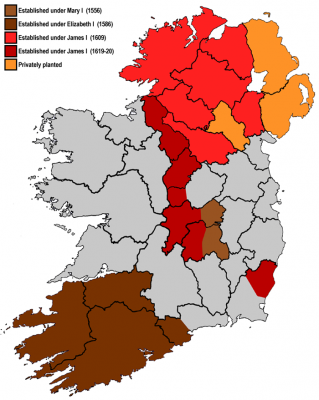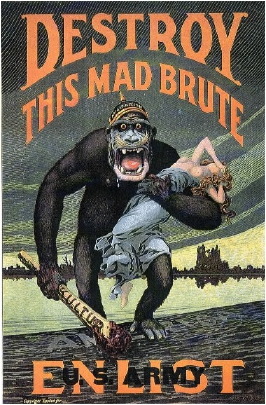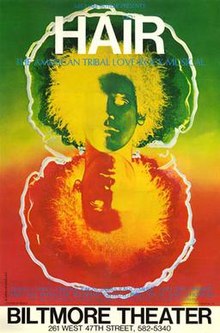
Joe Biden has become America’s second Indigenous President. John Kennedy was the first. Who knew?
It turns out based on the definition of “Indigenous” as an academic construct both the Irish and the Jews are Indigenous.
No general, internationally accepted definition of indigenous peoples exists. It is typical of indigenous populations that they do not represent the dominant population in the larger society of which they are part, although they may be the population group that inhabited the area first.
These “Indigenous” people also may compose the majority of the population in a given political entity as long as they are in a subordinate position. The critical component is the presence of a dominant population. Without a dominant population having victimized a weaker people, there effectively is no “Indigenous” people.
Part of the confusion over the meaning of the term occurs due to the different ways in which “Indigenous” is used. First of all, it does not mean “indigenous.” People who are labelled “Indigenous” do not necessarily live on their ancestral homeland. There is no correlation between being an “Indigenous” people in the politically-correct sense and being ‘indigenous” in the traditional sense of local or native. However, in the popular usage, “Indigenous” means “we were here before the dominant people came here and victimized us” including when the “here” means being displaced to somewhere else.
A second issue with “Indigenous” is with the academic construct itself. In the article “Settler Colonial Prehistories in Seventeenth-Century Century North America” (William and Mary Quarterly 76 2019), Susanah Shaw Romney notes that the related term “settler colonialism” remains a scholarly concept most widely used for the post-1800 English-speaking world. Shaw cautions Americanists to take heed of how scholars in distant fields use the term as will be shown below. She also cautions that terms may be applied when they are inappropriate such as with the seventeenth-century Dutch in New York, her own area of scholarship. This overuse problem with the application of the term will be addressed in a forthcoming blog. In the previous blog and this one, the issue is the underuse of the terms and not the overuse.
One byproduct revealed here is the frequent limitation of the application of “Indigenous” to being directed against white people, most notably English and American. This results in the undermining of the academic construct although not in the popular usage. As shown in the previous blog, Bantu settler colonialism against other people in Africa which occurred without any involvement of white people tends to be overlooked in Indigenous studies as not being relevant. In this blog, the same situation occurs in the Middle East and Europe further rendering that academic construct suspect due to its restricted application.
JEWS ARE INDIGENOUS
On October 25, I was viewing the Indigenous History Conference. When the session ended, I zoomed over to another conference, this one entitled “The Land that I Will Show You” Recent Archaeological & Historical Studies of Ancient Israel hosted by NYU. Notice how one conference includes the name of the people and the other does not. The speaker at the second conference when I zoomed was Yifat Thareani, New York University Tel Aviv, Hebrew Union College. She is an Israeli archaeologist. Her topic was “In Praise of the Conquered: Identity Making in Israel and Judah in the Face of Assyrian Rule.”
I missed the beginning of her presentation, but when I began listening partway through, I heard her say she was talking about Israelites as an indigenous people suffering from settler colonialism. The very same terms used in the Indigenous Conference were being used in the Ancient Israel Conference only this time they involved ancient Assyria and Israel and not Americans and Indians.
If you are not familiar with the situation, here is what happened. In 722/721 BCE, Assyria destroyed the kingdom of Israel. The defeated Israelites then endured three fates:
1. One group was taken captive to Assyria, the so-called 10 Lost Tribes, with part of that group, particularly the chariot force, being incorporated into the Assyrian army.
2. A second group fled the country and became refugees in Judah.
3. The third Israelite group remained on the land in Israel as a remnant people or Indigenous.
After the destruction of the Temple in 586 BCE by the Babylonians, the refugee group and the Judeans went through their own division into exile in the Diaspora, refugees such as to Egypt, or remaining on the land. In fact the biblical term for the remnant population is “people of the land,” a very Indigenous-sounding designation.
The Assyrians not only moved people out of the country conquered, they also move replacement settlers into the now depopulated country as part of their settler colonialism policy. In 716 BCE, the relocated people into the former kingdom of Israel included Arabs. In the archaeological record, this 716 BCE forced settlement is the first known instance of the Arab people living in what would later be called Palestine named after the non-Semitic Philistine people.
What happened to this mix of Indigenous Israelite people and the resettled peoples including the Arabs? Best guess is that they intermarried and became known later as Samaritans. These Samaritans continue to live on the land to this very day as a small remnant population.
People probably are more familiar with the Arab settler colonialism which occurred 1400 years later in the 7th century AD. That settler colonialism occurred throughout the Middle East from modern Iraq to Morocco. In its wake various remnant populations have survived struggling to maintain their language and culture. They include the following peoples who trace their presence in the land to prior to Arab settler colonialism although there has been intermarriage:
Palestinian Samaritans
Palestinian Jews
Palestinian Christians
Lebanese Christians
Iraqi Assyrians (Christians)
Egyptian Copts
Berbers.
In a print-article entitled “The Trap of Loyalty” on the Syrian Alawites, Robert F. Worth of the New York Times quotes two people he interviewed as follows:
“We are Mesopotamian, not Arabic. We don’t want to be Arabic.”
“It’s like your riots in Detroit in 1967. They [the Syrian rebels] are like losers ⸺ not good people. Like blacks in the U.S.A.”
These rebels referred to as “barbarians” were mainly the Sunni people who were leading the rebellion. It’s astonishing to witness when the eyes of the world are upon us, what exactly they see and remember. It also is a reminder that the putdown of the “other” as “savages” is not limited to white people and Indians as will be shown again below when the subject turns to the Celtic people.
Arab settler colonialism like Bantu settler colonialism falls outside the normal purview of Indigenous studies as a politically-correct doctrine but within the purview of Indigenous studies as an academic discipline.
IRISH ARE INDIGENOUS
When the scene shifts to Europe, one finds the same dilemma – how to reconcile Indigenous studies as a politically-correct doctrine versus developing it into academic discipline where white people can be both the victim and the perpetrator of settler colonialism.
Shortly after I read the “Exchange” in the journal of the American Historical Association which initiated this thread of blogs, I read an article in Archaeology, the magazine of the Archaeological Institute of America (I am president of the Westchester NY chapter) entitled “Resisting Rome: How a Celtic tribe fought to defend their Iberian homeland against the emperor’s legions.”
The article was about an archaeological excavation of a site that had resisted Rome and then was destroyed. The Cantabrian people were described by Roman writers as “savage, uncivilized, and overwhelming belligerent in nature.” In other words, they were depicted in the standard terms people have been using for thousands of years to denigrate the proverbial “Other.” This terminology has nothing to do with race, ethnicity, or any other characteristic except that the people are the enemy other and are shown as subhuman.

This famous recruiting poster from World War I shows the German Huns as barbarians of the first order in response to the atrocities they committed in Belgium. In the world at large, Indians were not first or only people to be called savages.
The victimization of the Celtic people first by Rome and then by the English falls within the guidelines for “Indigenous” people. One may observe the English royal plantations established in Ireland in the map above. This colonization including the area now known as Northern Island fits the definition. One critical difference between Israel and Ireland and the American Indian peoples is that the first two now are independent political entities whereas the third have reservations.
Here we may observe the challenge facing Indigenous studies with settler colonialism. Is its primary purpose to be an academic discipline where it can be applied globally in both the past and present to all peoples of the earth? Or is its primary purpose to be a weapon in the culture wars deployed against white people especially Americans and English? Is it possible for (some) scholars to prefer the former while (some) scholars and woke general public to prefer the other?
This issue came to a crux in the Exchange in the journal of the American Historical Association that started this thread. In a review of the book Our Beloved Kin: A New History of King Philip’s War by Lisa Brooks, reviewer David Silverman commented on her “speculative demonizations of the English” in contrast to her downplaying of intra-Indian violence [for the treatment of violence see the blog Violence and Native American and Indigenous Studies (NAIS)]. In an academic context, Silverman well may be right in his observation but in a politically-correct context he is exactly wrong. As a warrior in the culture wars, Brooks did what she is supposed to do. She even garnered acclaimed for her prowess as a warrior in defending her people and castigating the enemy white people.
Oh, you think I have crossed some line here, do you? Then take Columbus Day. Suppose you decide to topple his statue and rename the day. What name would you use? Would you call it “Indian Heritage Day”? No! Of course not! But why not? Indians are the people whose heritage is being celebrated. They don’t object to the term. They were called that for centuries. Why erase it? Why “Disappear” the Indian?
The answer is simple. How many white people would rally to the cause on behalf of “Indian Heritage Day”? Try “Zero.” Indian is a name. It has no moral connotations. It exists independently of any other people. By contrast, Indigenous is not a name but a part of a relationship. It takes two. There were no Indigenous people in what became the United States before the arrival of white people according to the definition. To be Indigenous requires a dominant people who victimized you. You can be an Indian before the arrival of the white people but you can’t become Indigenous until after they do.
To be Indigenous implies that you were here first which means another people came here second. It means the land belongs to you, and that white people need to repent America’s second original sin. White people will rally to that call. White people have rallied to that cause of the Indigenous in a way they would not for Indians. At least some white people have. For others that call is a mircroaggression that alienates them from wanting to consider the legitimate concerns of the Indian people. So what. Who cares what they think. Those “Other” people are backward.






